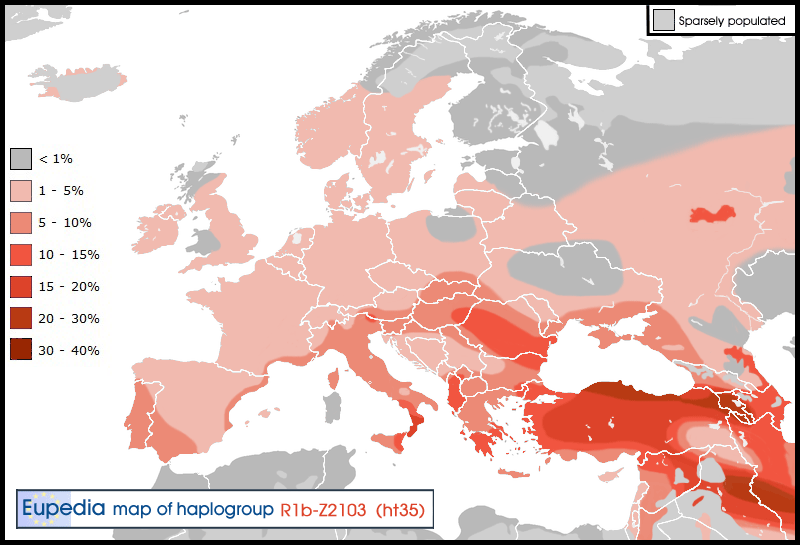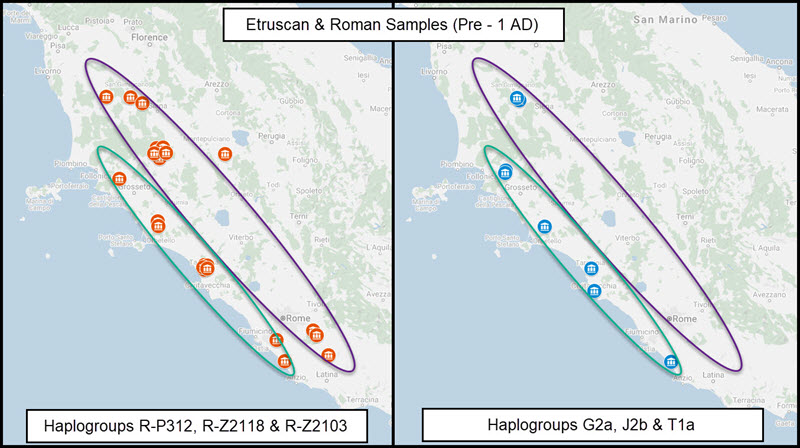Yeah, interesting!
Don't know about the Encrusted Pottery Culture in specific, but the hypothesis of an ultimate origin to the North(east) sounds nice, if we consider the presence of the G-L497 subclade among early Etruscans, and the affinity of the language to Rhaetian. There's no evidence of G-L497 in Neolithic Western Europe (so far). The main G2a type in NE Italy must have been the G-PF3359 (also found in an early Etruscan sample), judging by the Broion samples. Neo/Chalco Italy also includes several I2, G2a2a (Ötzi's), J2, H...
One of the G-L497 hotspots nowadays is Switzerland, but the G2a type in Neolithic Switzerland was mostly Ötzi's, till its almost complete replacement by R1b (from ~4600 ybp onwards). In addition, virtually all those G2a2b2a in the paper on France were either confirmed negative for L497 equivalents or were confirmed for different subclades. On the other hand, regarding the G-L497, we have a co-presence of the immediate subclades G-CTS9737 and G-Z27264 respectively in Hungary (Baden Culture) and Bohemia (Unetice Culture). There's also a G-L497 (probably pre-G-CTS9737 or pre-G-Z27264) in Bohemia, virtually as old as the one from Baden. Finally, there's this "possible" Austrian G-L497 from 700 BCE (Hallstatt), perhaps indicating that part of the G-L497 men could have adopted a "foreign" language, while others would have kept speaking their original Tyrsenian language for a while longer (?).
Still regarding Etruscans (or their ancestors), Grugni et al. did suggest a possible migration from Central Europe, based on the relevant presence of G-L497 in modern Volterra, whereas the R1b could indicate a local origin (the Broion samples evidence an early arrival of the clade to Italy).
So who knows!
Anyway, there must have been EEF-rich people in Central Europe that survived for long. See, for example, the Eastern Swiss SX18 (172-12 BCE), whose Autosomal resembles FN2's, interestingly.





